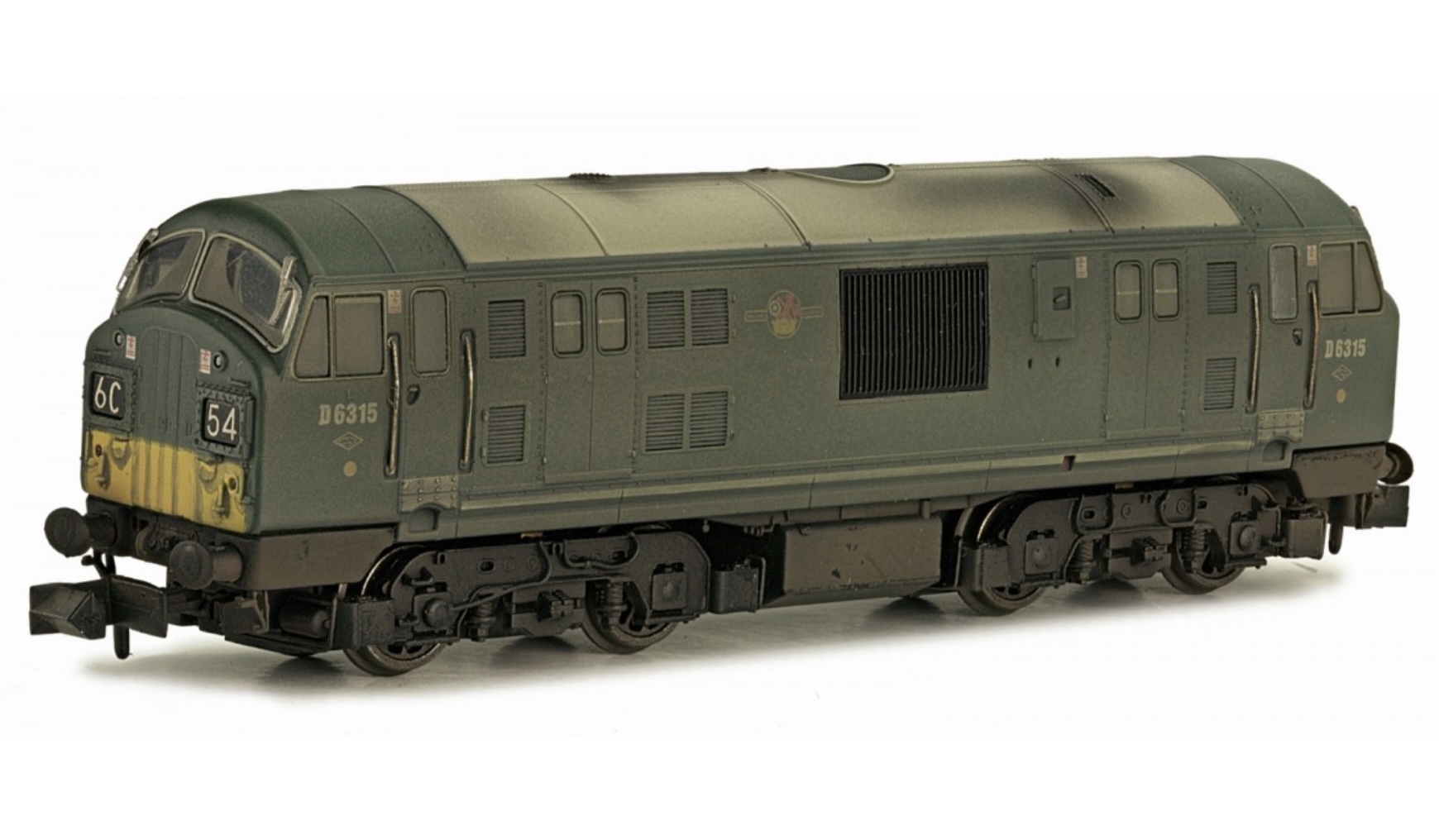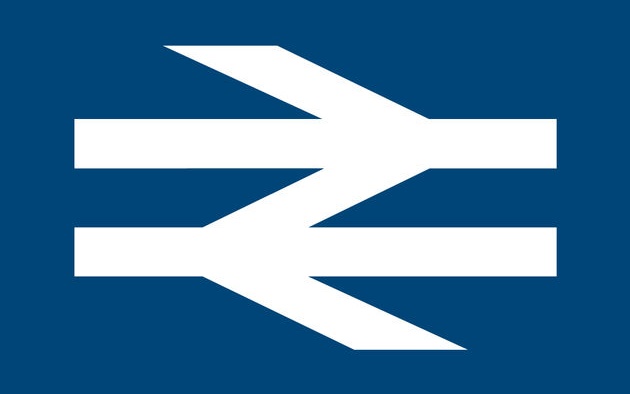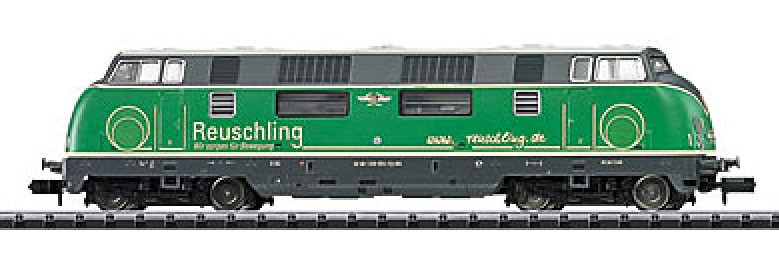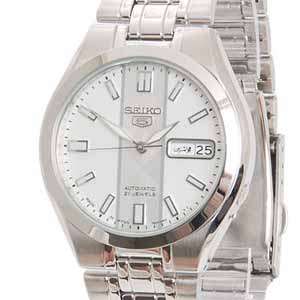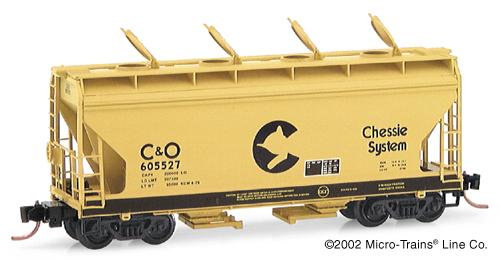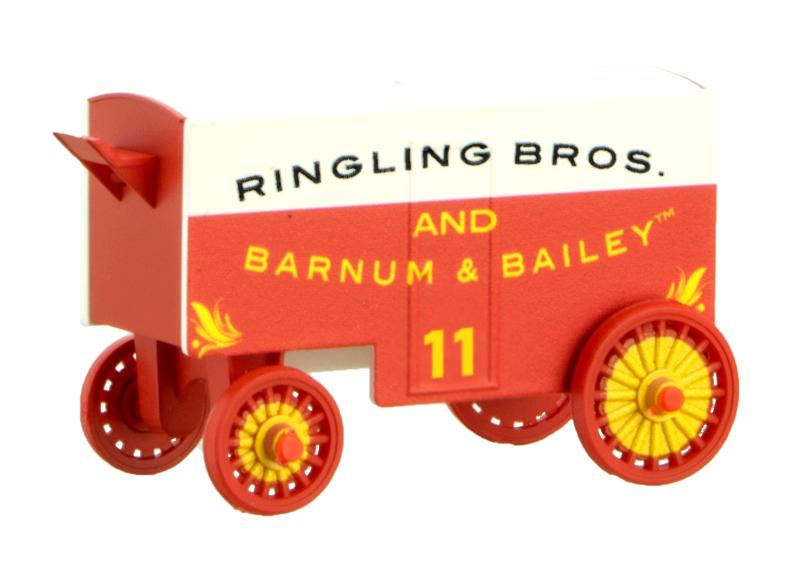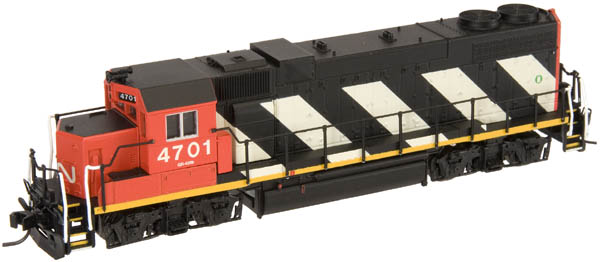Specific Item Information: The BR Class 22 is a type of Bo-Bo diesel locomotive designed for the Western Region of BR and built by NBL. The Class has been nicknamed the Baby Warship due to their similarity to the Warship Class 42 locomotive. Fifty seven locomotives were built between 1959 and 1962 and operated in the West of England hauling both passengers and freight. The class was eventually displaced by the more powerful and reliable Hymeks and Warships, exacerbated by the bankruptcy of NBL in 1962 and the consequential lack of spares. By 1971 all had been decommissioned and none survived into preservation.
DCC fitted with a Gaugemaster DCC23 decoder
DCC fitted with a Gaugemaster DCC23 decoder
Road Name History: British Railways (BR), which from 1965 traded as British Rail, was the state-owned company that operated most of the overground rail transport in Great Britain between 1948 and 1997. It was formed from the nationalisation of the "Big Four" British railway companies and lasted until the gradual privatisation of British Rail, in stages between 1994 and 1997. Originally a trading brand of the Railway Executive of the British Transport Commission, it became an independent statutory corporation in 1962 designated as the British Railways Board.
British Rail designed and manufactured rolling stock from 1948 to 1989, at which time its subsidiary British Rail Engineering Limited (BREL) was privatised.
1997 marked the end of the privatization effort in which the last assets of British Rail were sold to 31 regional freight and passenger operators as well as Railtrack (which was later brought under public control as Network Rail), which was given the track and infrastructure.
Read more on Wikipedia.
British Rail designed and manufactured rolling stock from 1948 to 1989, at which time its subsidiary British Rail Engineering Limited (BREL) was privatised.
1997 marked the end of the privatization effort in which the last assets of British Rail were sold to 31 regional freight and passenger operators as well as Railtrack (which was later brought under public control as Network Rail), which was given the track and infrastructure.
Read more on Wikipedia.
Brand/Importer Information: Dapol Ltd is a Welsh model railway manufacturer based in Chirk, Wales. The factory where design and manufacturing take place is just over the border in England. The company is known for its model railway products in N gauge and OO gauge. Dapol's name is a play on its founders David and Pauline Boyle's names. He owned a model concern Highfield Birds & Models. In 1981 he first tried to buy the Airfix and Mainline ranges. The Dapol brand name was first used in a Railway Modeller advert of September 1983. The first Dapol wagons (for OO) were announced to become available on 20 November 1983. From 1 March 1984 ex Airfix railway kits became available.
Dapol manufactures a growing range of N gauge locomotives, coaches and wagons, and is the main competitor of Graham Farish in the British 'ready-to-run' market. Continuous improvement in model specifications has led to the introduction of 40:1 gearing in locomotive drive mechanisms, NEM couplings on all stock, and LED lighting strips for coaching stock (yellow for 'older' coaches, to represent incandescent illumination, and white for more modern coaches and EMUs to represent fluorescent fittings).
Dapol manufactures a growing range of N gauge locomotives, coaches and wagons, and is the main competitor of Graham Farish in the British 'ready-to-run' market. Continuous improvement in model specifications has led to the introduction of 40:1 gearing in locomotive drive mechanisms, NEM couplings on all stock, and LED lighting strips for coaching stock (yellow for 'older' coaches, to represent incandescent illumination, and white for more modern coaches and EMUs to represent fluorescent fittings).
Item created by: CNW400 on 2022-01-12 09:52:46
If you see errors or missing data in this entry, please feel free to log in and edit it. Anyone with a Gmail account can log in instantly.
If you see errors or missing data in this entry, please feel free to log in and edit it. Anyone with a Gmail account can log in instantly.


